Enhancing General Aviation Weather Training Using Augmented Reality
Designing and Researching How to Use Augmented Reality to Enhance Weather Training for Aspiring General Aviaiton Pilots
Preliminary evaluation | Formative evaluation | Comparative evaluation
Introduction
General aviation (GA) weather training has long struggled with effectively conveying the dynamic, 3D nature of weather phenomena like thunderstorms. Traditional training materials—such as print and video—can be static and limited in their ability to represent these phenomena in realistic, interactive ways. While simulators offer a more immersive experience, they are often costly and inaccessible for many students. To address these limitations, this project explored the use of augmented reality (AR) to provide a more engaging, immersive, and interactive learning experience for students studying thunderstorms, with the goal of improving both knowledge retention and motivation.
Approach
The goal of this project was to create an AR-based learning tool that would enhance traditional weather training by representing thunderstorms in a way that students could interact with and explore in 3D space. The AR experience was designed to:
- Visualize dynamic weather phenomena like thunderstorms in 3D, showing how storms evolve over time.
- Increase student engagement by offering an interactive learning experience that could be used both in the classroom and on-the-go.
- Support learner-centered instruction, ensuring that the AR content aligned with instructional goals and scaffolding strategies to guide students through increasingly complex weather concepts.
The design process was informed by learner-centered instructional design, ensuring that each learning module progressively built on students' existing knowledge and provided formative assessments to gauge their understanding.
Design
The AR learning experience was structured around four main learning activities:
- Thunderstorm Cell Lifecycle: Students explored the different stages of a thunderstorm's development, from the initial formation to its dissipation.
- Microburst Characteristics: Students interacted with a 3D model of a microburst, learning about its key features and how they impact aviation.
- Effects of a Microburst on Aircraft Flight Path: A flight path simulation allowed students to visualize how a microburst affects an aircraft’s trajectory, helping them understand the potential hazards.
- Thunderstorm Avoidance: This module simulated real-life scenarios where students practiced identifying storm patterns and applying avoidance strategies to ensure safe flight operations.
The AR content was designed to overlay the traditional textbook-style learning materials with interactive 3D models that students could manipulate and explore. Each module was coupled with formative assessments to test students' knowledge and understanding at each stage of the learning process.
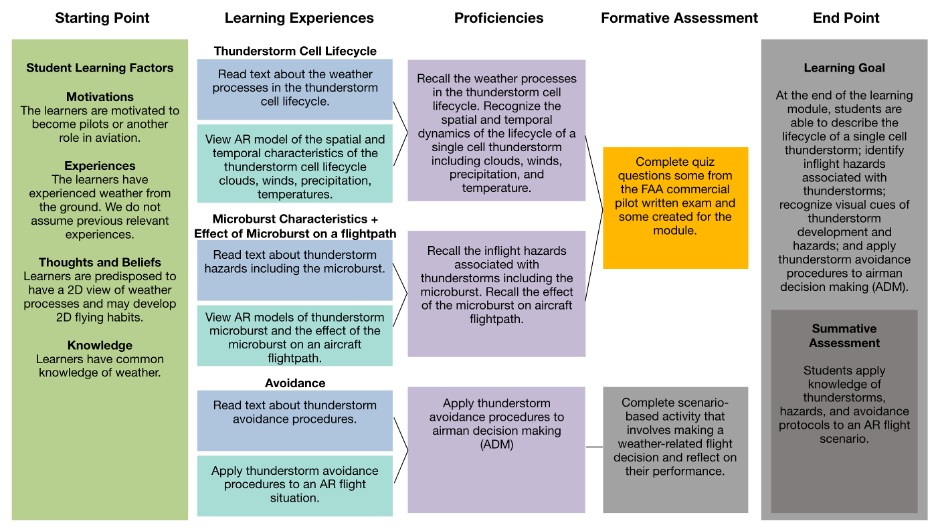
The first learning activity was about the thunderstorm cell lifecycle.
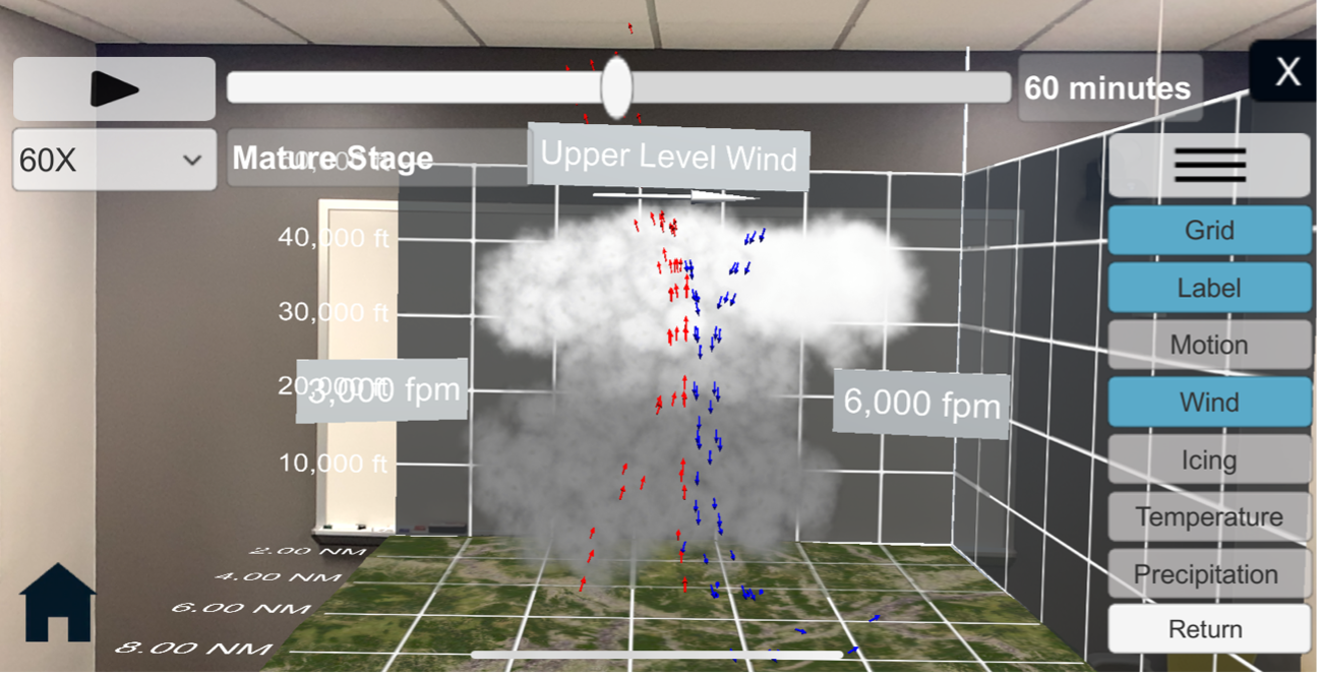
The second learning activity was about the microburst characteristics.
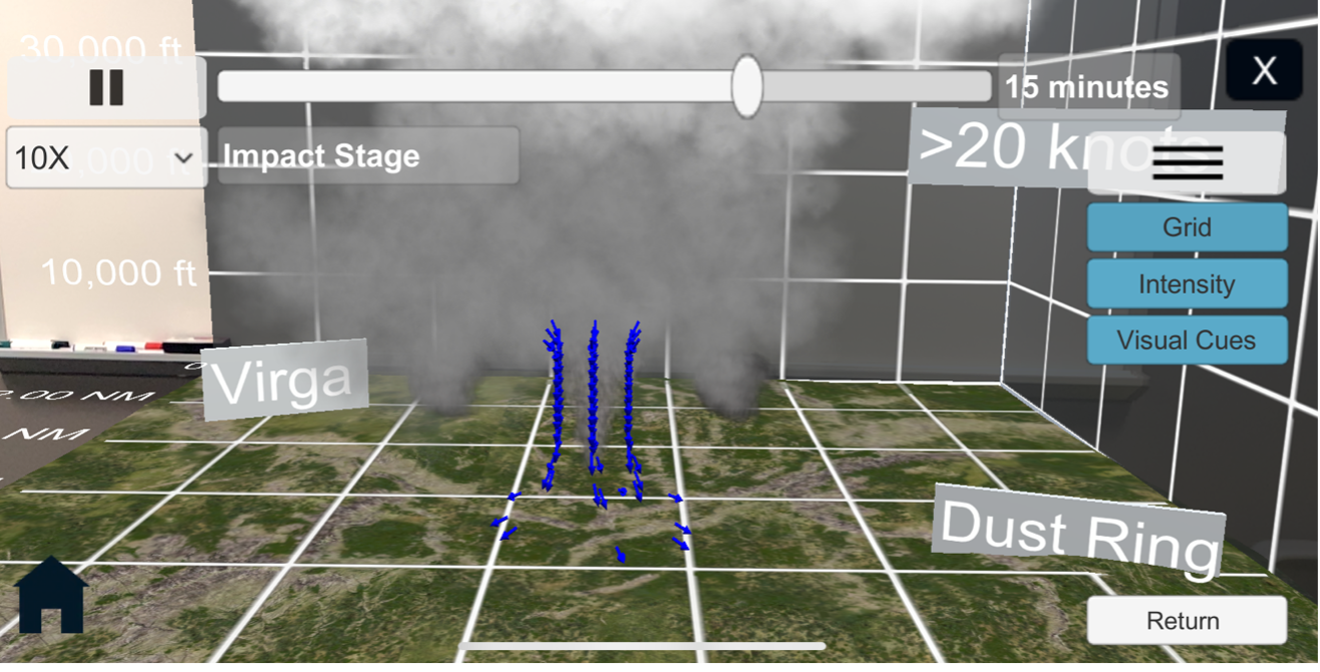
The third learning activity was about the effects of a microburst on an aircraft flightpath.
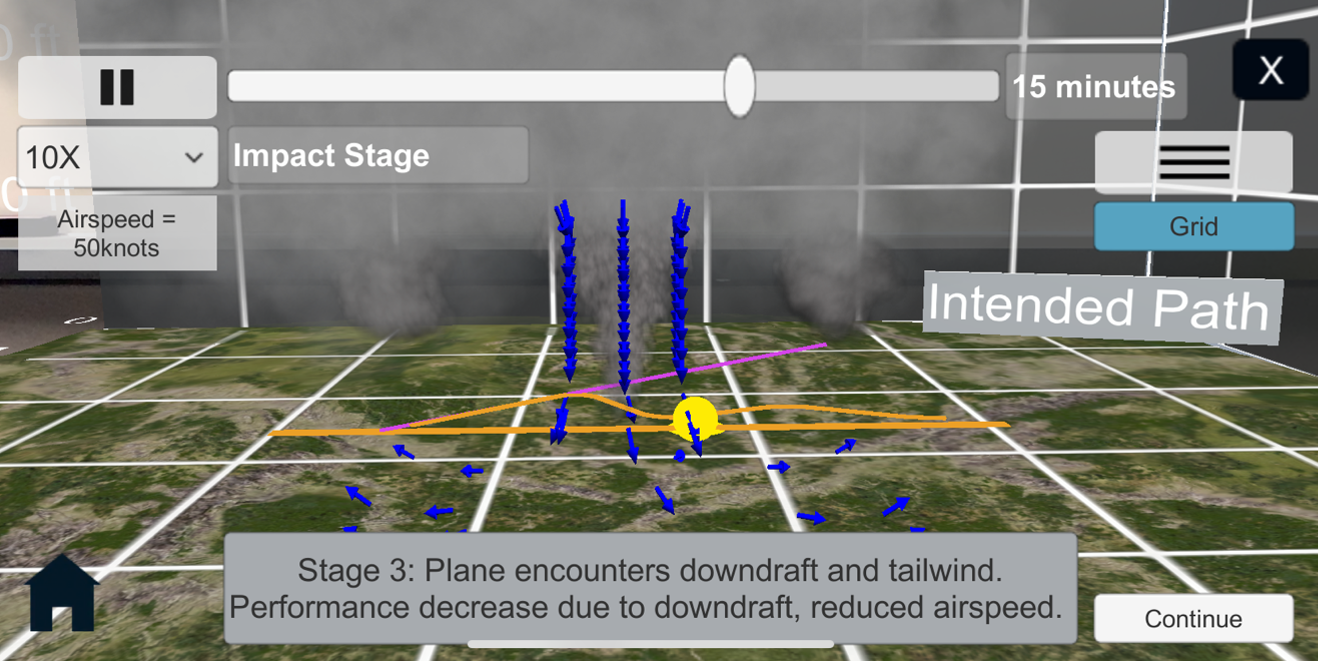
The fourth learning activity was about thunderstorm avoidance.
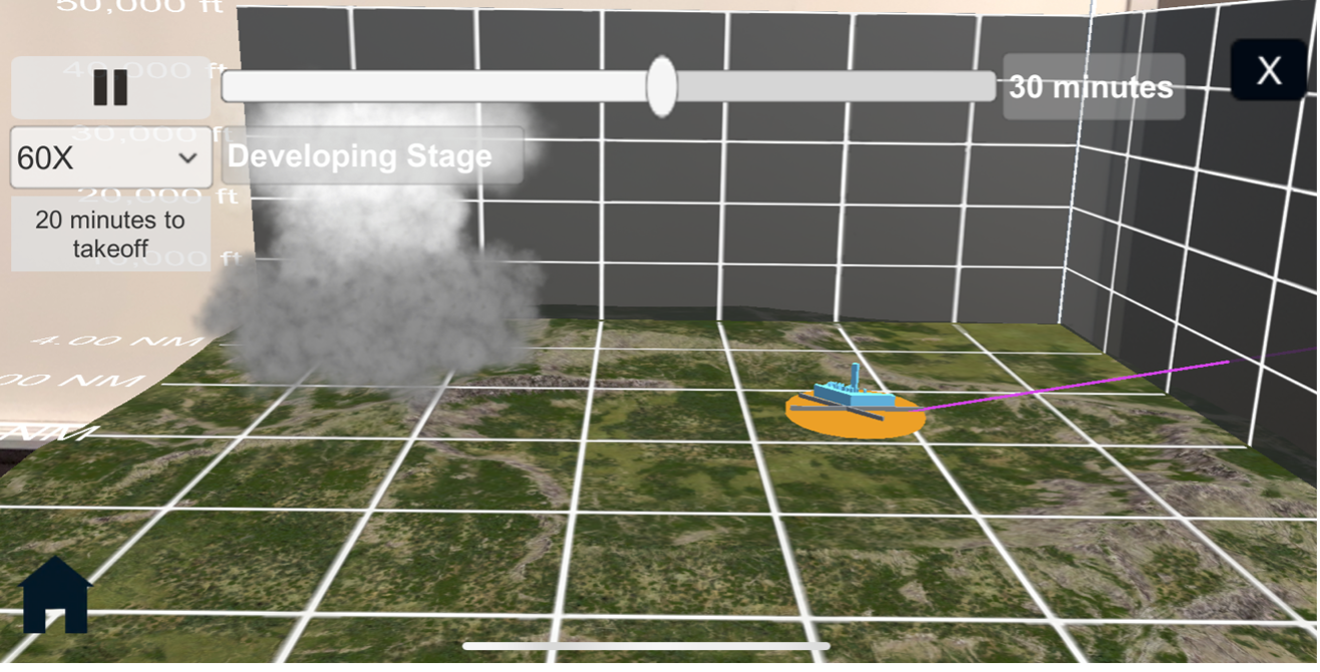
Evaluation
A user study was conducted with 18 student pilots and new pilots (average age: 25) to assess the effectiveness of the AR-based training. The study focused on two key hypotheses:
- H1: AR learning experiences improve students' factual knowledge of thunderstorms.
- H2: AR learning experiences improve students' visual knowledge of thunderstorms.
Pre- and post-tests were used to measure changes in factual and visual knowledge, while participants were also evaluated on task load, motivation, system usability, and overall learning experience.
Table 1 summarizes the tasks and the prompts given to students to complete the task.
| Dependent Variable | Metric | Data type | Method | Frequency |
|---|---|---|---|---|
| Factual knowledge | Quiz Score | Percent | Quiz | Pre/Post experiment |
| Visual knowledge | Quiz Score | Percent | Quiz | Pre/Post experiment |
| Task time | Time | Seconds | Qualtrics | Post-task |
| Task correctness | Score | Percent | Qualtrics | Post-task |
| Task load | NASA TLX | Scale 0-20 | Questionaire | Post-task |
| Motivation | RIMMS | Scale 1-5 | Questionaire | Post-experiment |
| System Usability | SUS | Scale 1-5 | Questionaire | Post-experiment |
| Positives | Statements | Text | Written statement | Post-task and experiment |
| Improvements | Statements | Text | Written statement | Post-task and experiment |
Two-tailed paired-samples t-tests were conducted to compare the knowledge test scores in the pre-test and post-test conditions. The alpha level of .05 was used for all statistical tests. The effect sizes were calculated using Cohens d and categorized according to Cohen’s thresholds. Quantitative data about task load, system usability, appropriateness, and motivation were described. Written statements about positives and improvements were aggregated, and themes were developed.
Results
The results showed significant improvements in both factual knowledge and visual knowledge after completing the AR learning activities:
- Factual knowledge: Students' post-test scores were significantly higher than their pre-test scores, indicating that the AR experience enhanced their understanding of thunderstorms' properties and behavior.
- Visual knowledge: The AR models were particularly effective in helping students better understand the spatial and temporal dynamics of thunderstorms, with students reporting a deeper understanding of how these phenomena unfold in 3D space.
One student commented: "The AR app made it very easy to see in a 3D setting what a storm will look like through its various stages. This is very helpful for new pilots who may not be familiar with how a storm would look in the air."
In terms of student motivation, the AR experience was well-received, with students rating the learning activities as engaging and relevant to their future careers. They reported a high level of motivation and confidence, and found the content to be appropriate for their level of knowledge.
The System Usability Scale (SUS) and NASA Task Load Index (TLX) also showed positive results, with participants rating the system as easy to use and not overly demanding.
Discussion
The use of augmented reality in weather training demonstrated a significant impact on students' factual and visual understanding of thunderstorms. The interactive, 3D nature of the AR modules helped students visualize complex weather phenomena in ways that were not possible with traditional 2D materials. This not only improved learning outcomes but also increased motivation, which is critical for engaging students with a subject that some may perceive as dry or difficult.
However, the study also identified areas for improvement. While the AR content was successful in helping students understand the basics of thunderstorms, it was limited in scope, focusing on a single-cell thunderstorm scenario. Future iterations of the training will aim to incorporate more diverse weather phenomena, including multi-cell storms, and will provide more opportunities for students to practice situation awareness and weather-related decision-making in realistic flight scenarios.